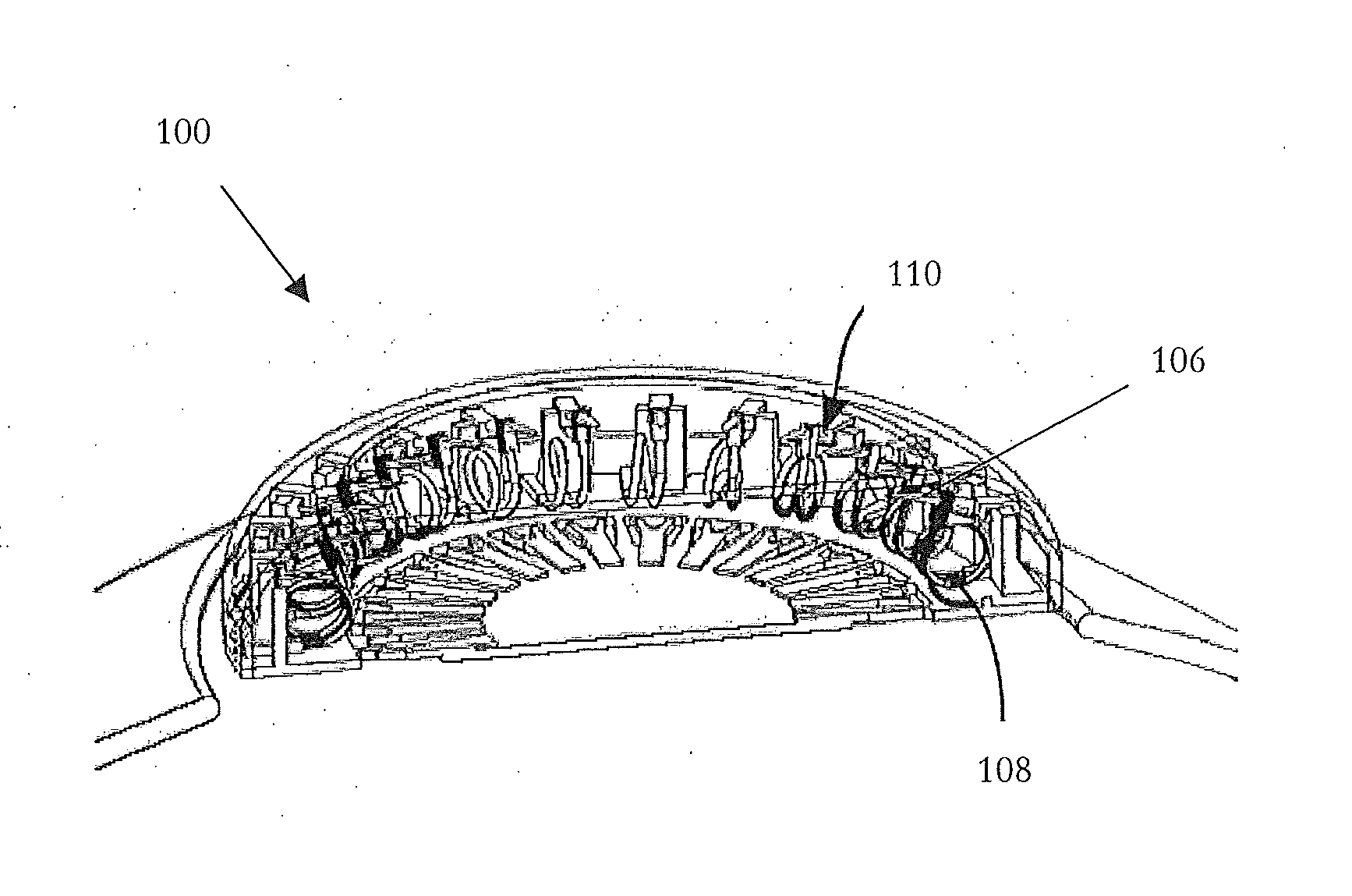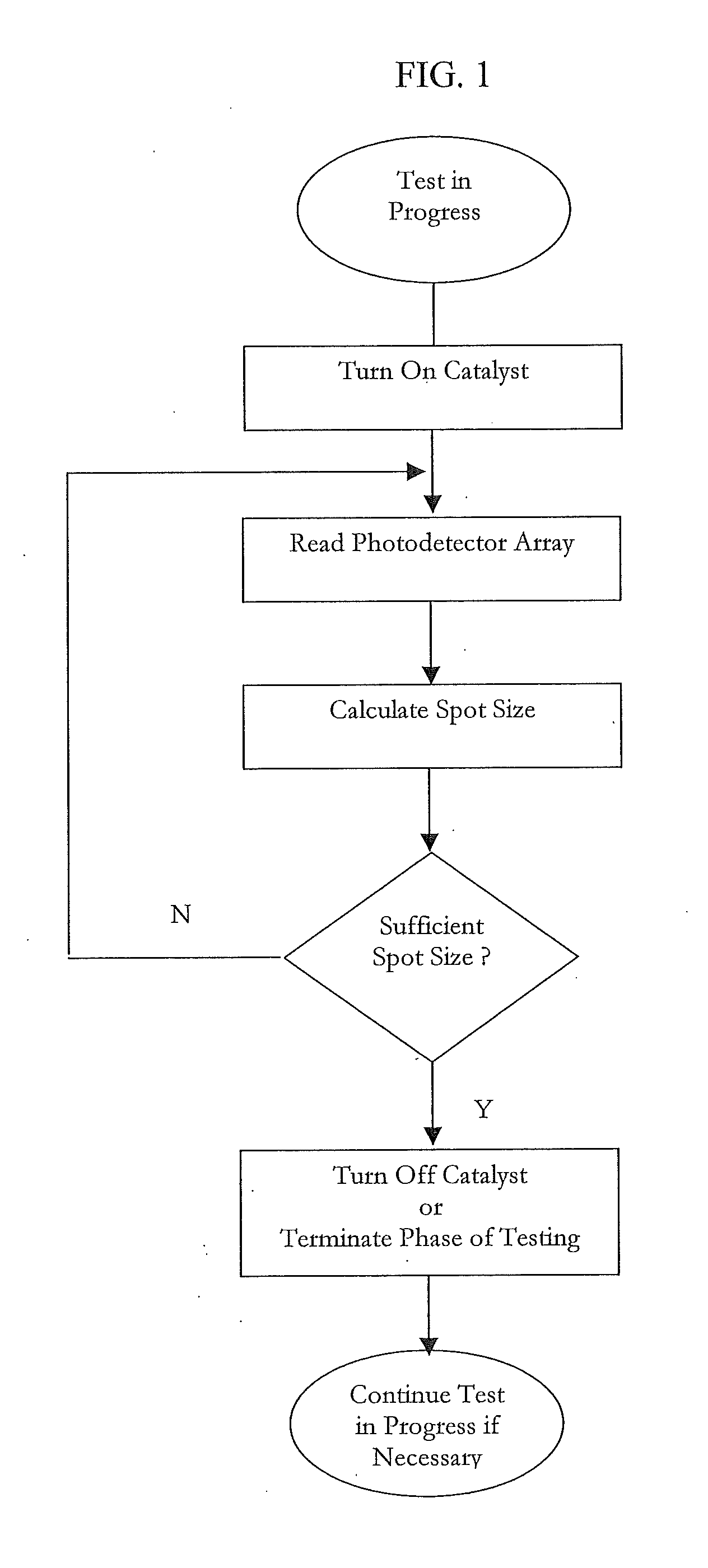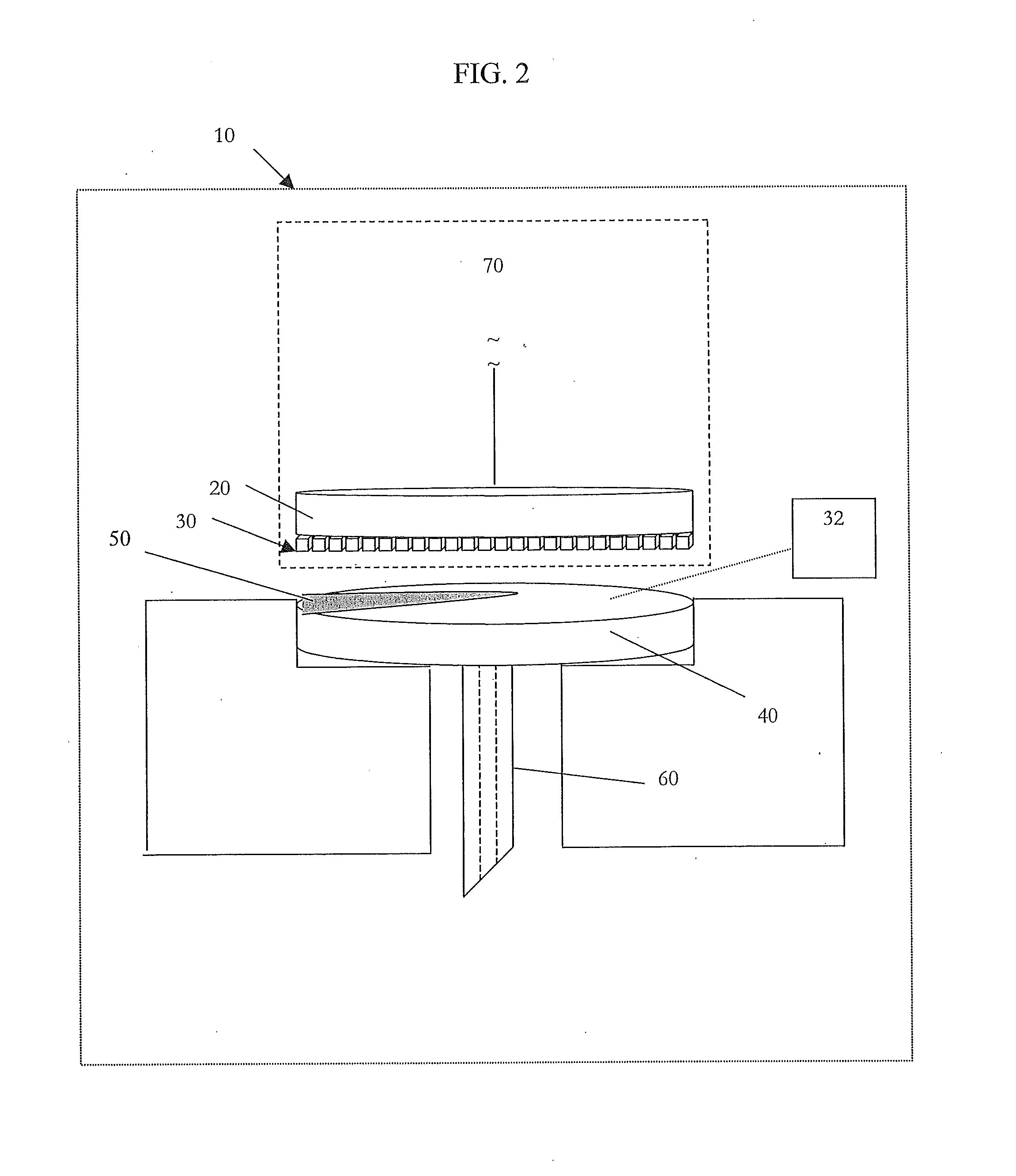Analyte detection devices and methods with hematocrit-volume correction and feedback control
a technology of hematocrit and volume correction, applied in the direction of instruments, fluorescence/phosphorescence, etc., can solve the problems of pre-programmed catalysts producing either insufficient or excessive blood, and the development of accurate glucose monitoring may be subject to errors, etc., to achieve accurate, efficient, and economical determination of the presence and/or concentration of analytes
- Summary
- Abstract
- Description
- Claims
- Application Information
AI Technical Summary
Benefits of technology
Problems solved by technology
Method used
Image
Examples
Embodiment Construction
[0036]Exemplary arrangements and methods for the detection and measurement of the presence and / or concentration of a target analyte, such as glucose, bilirubin, alcohol, controlled substances, toxins, hormones, proteins, etc., will now be described.
[0037]In broader aspects, the current invention provides the ability to correct for broad variations in sample hematocrit levels in the measurement of an analyte, such as glucose, during the course of the test. The invention takes advantage of an imaging array of detectors to perform this correction and does not require any additional hardware. In other words, no other distinct sensors or detectors, other than the imaging array, are required to calculate the correction. The very sensor that is used to quantify the analyte within the sample may also correct for hematocrit. Strategic algorithms that process the data from the imaging array provide real-time or near real-time information about the sample hematocrit level. Thus, more accurate ...
PUM
| Property | Measurement | Unit |
|---|---|---|
| volume | aaaaa | aaaaa |
| volume | aaaaa | aaaaa |
| length | aaaaa | aaaaa |
Abstract
Description
Claims
Application Information
 Login to View More
Login to View More - R&D
- Intellectual Property
- Life Sciences
- Materials
- Tech Scout
- Unparalleled Data Quality
- Higher Quality Content
- 60% Fewer Hallucinations
Browse by: Latest US Patents, China's latest patents, Technical Efficacy Thesaurus, Application Domain, Technology Topic, Popular Technical Reports.
© 2025 PatSnap. All rights reserved.Legal|Privacy policy|Modern Slavery Act Transparency Statement|Sitemap|About US| Contact US: help@patsnap.com



